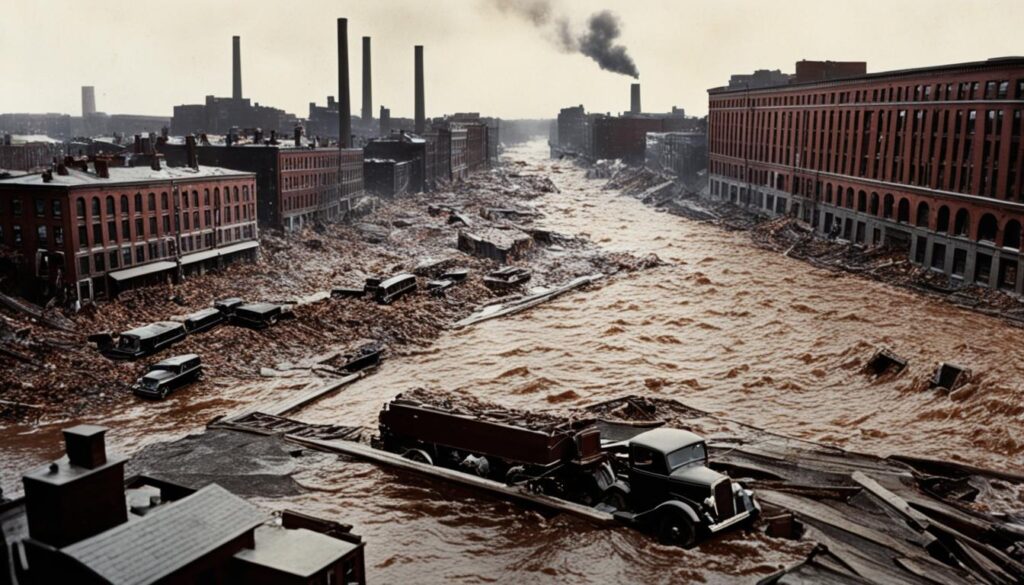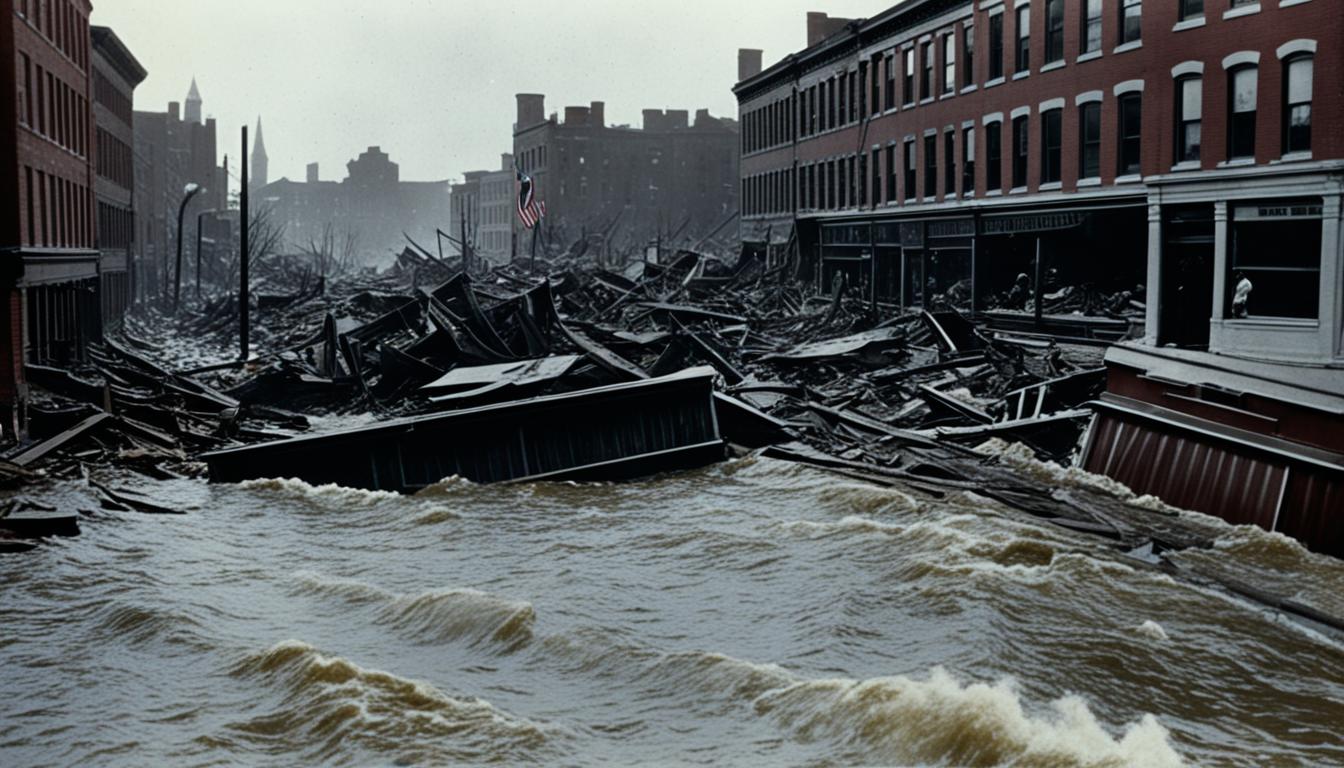The Boston Molasses Flood of 1919 was a shocking event in American history. On January 15, a huge storage tank in Boston’s North End burst. This sent a deadly wave of molasses through the streets.
This Great Molasses Flood took 21 lives and injured 150 people. It changed Boston forever.
During the Historic Molasses Spill, 2.3 million gallons of syrup poured through the area at 35 mph. The Boston Molasses Tragedy had a lasting impact. It led to new rules for industrial safety and changed how cities plan for disasters.
Key Takeaways
- The Great Molasses Flood occurred on January 15, 1919, in Boston’s North End
- A massive storage tank burst, releasing 2.3 million gallons of molasses
- The flood resulted in 21 deaths and 150 injuries
- Molasses waves reached speeds of up to 35 mph
- The Boston Molasses Tragedy led to changes in industrial safety regulations
- This historic event continues to fascinate and educate people today
The Great Molasses Flood: A Catastrophic Industrial Accident
On January 15, 1919, Boston faced a disaster. The Purity Distilling Company’s facility on Commercial Street was at the center. A huge tank, 50 feet tall and 90 feet wide, burst around lunchtime.
People felt the ground shake and heard a loud roar as the tank broke. Then, a Deadly Wave of Molasses came. It was 25 feet high and moved at 35 mph. This disaster hit the North End hard, destroying buildings and a streetcar.
The flood was huge. It took people and animals, trapping them in molasses. Trying to rescue them was hard because the molasses was so sticky. This disaster is like the vampire panics in New England in the 1800s. Both were full of fear and misunderstandings.
The Great Molasses Flood is one of the strangest industrial accidents in the U.S. It changed Boston forever. It reminds us of the dangers in everyday things.
Boston Molasses Flood: Causes and Contributing Factors

The 1919 disaster in Boston was a result of many mistakes. The huge tank that stored molasses was doomed from the start. It leaked constantly, showing it was poorly built.
The tank’s walls were too thin, making it unable to hold the molasses. This was a clear warning sign of disaster.
Poor construction was a big reason for the explosion. The steel and rivets used were not strong enough. These weaknesses made the tank a danger in Boston.
The weather also played a part in the disaster. The day before, it was very warm, making the molasses ferment. This fermentation increased pressure inside the tank.
When the temperature dropped, the steel tank became brittle. This was the last thing that caused the tank to burst.
These factors came together to create a disaster. The tank, with its fermenting molasses, couldn’t handle the pressure. This led to a huge flood that changed Boston’s North End forever.
The Aftermath: Rescue Efforts and Cleanup
The Boston’s Sweet Disaster led to a quick response. Cadets from USS Nantucket, Boston Police, Red Cross, and military teams joined forces. They used creative methods for the Molasses Flood Cleanup. Fireboats sprayed salt water, and sand was used to absorb the molasses.
Cleanup took weeks. The molasses spread far, affecting Greater Boston. People and vehicles tracked it. The smell of molasses stayed in the air for years, reminding everyone of the disaster.
The disaster’s effects went beyond just cleaning up. A lawsuit against United States Industrial Alcohol Company led to a $628,000 payout. This lawsuit made companies more responsible for accidents.
The cleanup was a turning point for Boston. It showed the need for better safety rules and emergency plans. Boston’s strength was clear as it recovered from this tough event.
Legacy and Scientific Understanding of the Molasses Disaster
The Boston Molasses Flood had a big impact on U.S. building codes and corporate rules. It led to big changes in how buildings are made. Scientists have studied the disaster to learn more about what happened.
Fluid dynamics experts say the molasses wave moved fast for a reason. The weather was a big factor. Warm weather made the molasses spread quickly, and cold nights made it thick and hard to clean up.
These insights have helped us understand the Molasses Disaster Analysis better.
Now, the Boston Molasses Flood is a key example in engineering ethics classes. It shows the importance of safety in industries. Students and professionals learn from it to make safer practices and avoid future disasters.
The disaster’s legacy reminds us of the dangers of ignoring safety. It teaches us about the need for careful industrial practices and the effects of not having enough oversight.

Leave a Reply